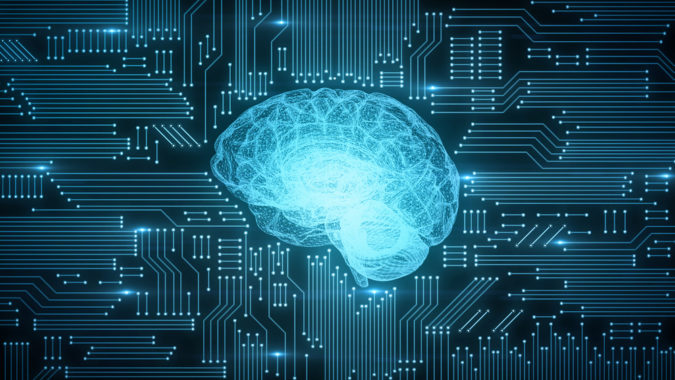Table of Contents
Intel’s Hala Point :Empowering AI With Brain-Inspired Sustainable Computing
With our fast changing technological landscape, Intel’s unveiling of Hala Point marks a critical milestone in the development of brain-inspired neuromorphic systems and their role in providing effective and sustainable computing solutions.
There is a greater need than ever for creative systems that can replicate the intricate workings of human brain as we approach a significant technology transformation.

The idea of creating a computer system that mimics the complex processes of the human brain has enormous potential.
Artificial intelligence (AI) models can benefit from such systems in a number of ways, including energy efficiency, bias mitigation, interpretability, and adaptability to a variety of contexts and applications.
Developed especially for effective and sustainable AI operations, Intel’s Hala Point is a breakthrough in brain-inspired neuromorphic computing.
With its staggering 20 quadrillion operations per second and an amazing array of 1152 Loihi 2 processors, Hala Point is able to process complex computational workloads and real-time AI activities with unmatched speed and efficiency.
Hala Point’s capacity to use neuromorphic computing concepts to handle demanding processing requirements while drastically reducing energy consumption is one of its primary differentiators.
This strategic focus is in perfect harmony with Intel’s larger goal of addressing the sustainability issues that arise from the application of increasingly complex and resource-intensive artificial intelligence models.
Hala Point operates with much less power consumption and delivers efficiencies comparable to deep neural networks by leveraging sparse connectivity and event-driven activity.
Situated at Sandia National Laboratories, Hala Point boasts a significant boost in neuron capacity and overall performance, building upon the foundation laid by Intel’s previous Pohoiki Springs system.
The system’s installation at Sandia National Laboratories highlights its critical role in promoting the study of brain-scale computing and enabling ground-breaking investigations into artificial intelligence and machine learning.
In addition to its immediate uses, Hala Point is a demonstration of Intel’s dedication to advancing neuromorphic computing and sustainable artificial intelligence.

Its state-of-the-art design makes it possible for it to be used as a vital testbed for the creation and verification of forthcoming AI and machine learning models.
Hala Point represents the spirit of progress-driven sustainability in the larger context of technical innovation. It captures Intel’s goal of using cutting-edge technologies to address urgent societal and environmental issues.
With its strategic focus on sustainability and its combination of superior computing capabilities, Intel’s Hala Point marks a significant advancement in the field of artificial intelligence and neuromorphic computing.
In summary, Intel’s unveiling of Hala Point, which demonstrates the potential of brain-inspired neuromorphic systems to transform AI computation while tackling environmental issues, marks a significant advancement in this field.
Technology will continue to shape our world in the future, and systems like Hala Point serve as a powerful reminder of the transformational power of innovation when it is driven by efficiency and sustainability principles.
Also visit:https://www.marktechpost.com/2024/04/26/neuromorphic-computing-algorithms-use-cases-and-applications/
The Power Of Neuromorphic System
Compared to conventional computing architectures, which depend on sequential processing, neuromorphic systems mark a paradigm change.
In contrast to traditional machines, a neuromorphic system uses artificial neurons to achieve parallel operation, allowing data to be processed and stored simultaneously without requiring the user to switch between various parts.
One of the main characteristics that set neuromorphic systems apart is their innate parallelism, which leads to dramatically lower energy consumption and faster data processing rates.
A neuromorphic system’s basic architecture is modeled after the intricate web of neurons seen in the human brain. Efficient and decentralized computation is promoted by the ability of each artificial neuron in the system to process information independently and communicate directly with other neurons.
Neuromorphic systems excel at processing large volumes of data in parallel by utilizing hardware parallelism, which results in significant increases in computational efficiency.
Neuromorphic systems have the potential to be revolutionary because they can replicate the brain’s efficient information processing capabilities.
While traditional computers use centralized processing units, neuromorphic systems distribute computation among interconnected neurons, similar to how neural networks in biological systems are distributed.
This decentralized approach simplifies computation and makes tasks like pattern recognition, inference, and learning more efficient.
Additionally, the bottleneck that traditional architectures’ data flow between memory and processor units causes is eliminated by the employment of artificial neurons in neuromorphic systems.
By processing data directly within the neural network in a neuromorphic system, latency and energy overhead related to data transfer are minimized.

Applications for machine learning and artificial intelligence can advance when neuromorphic computing principles are incorporated into hardware architecture.
In situations where low power consumption and real-time data processing are essential, including edge computing, autonomous systems, and Internet of Things sensors placed in resource-constrained areas, neuromorphic systems perform exceptionally well.
In conclusion, neuromorphic systems are a revolutionary kind of computing that leverage distributed processing and parallelism, drawing inspiration from the workings of the human brain.
These systems provide notable benefits in terms of energy efficiency and data processing speed when compared to conventional computing architectures because they make use of artificial neurons and parallel operation.
Neuromorphic systems have the potential to completely change computer and artificial intelligence paradigms, opening the door to more sophisticated, energy-efficient, and scalable solutions.
Also read:https://telecastindia.in/on-april-24-icici-bank-credit-card-glitch-exposed/
Accelerating Optimization With Unprecedented Efficiency
Intel claims that Hala Point, despite not being open to the public for independent testing, represents a revolutionary advance in compute efficiency.
When compared to conventional GPU and CPU designs, the system is claimed to use up to 100 times less energy to tackle optimization problems. Furthermore, Hala Point operates at exceptionally high speeds, achieving 50 times faster performance than traditional computing systems.
According to Intel, neuromorphic computing has the ability to optimize complicated operations with previously unheard-of levels of efficiency.

Hala Point seeks to transform computing performance and energy usage in AI and machine learning applications by utilizing cutting-edge neuromorphic concepts.
Intel’s vision for Hala Point highlights a promising future for high-performance and sustainable computing technologies that could transform the field of optimization and data-intensive jobs, even though independent validation is still awaited.
In an effort to enhance Hala Point’s functionality and collect insightful input, Intel has extended restricted access to more than 200 organizations within the Intel Neuromorphic Research Community (INRC), encompassing government laboratories, educational establishments, and research firms.
Hala Point is still in its infancy, but so far it shows promise as a more effective and long-lasting method of training AI models.
Intel wants to improve Hala Point even more by using neuroscience concepts to reduce power usage and increase efficiency.
Should Hala Point reach its full potential, the sector may expect more competition. Later this year, DeepSouth, a different neuromorphic supercomputer that can replicate human brain synapses at full scale, is anticipated to go online.
Exploring The Diverse Application Of Neuromorphic Computing
A cutting-edge approach to computational technology, neuromorphic computing has numerous applications in a wide range of industries, including autonomous vehicles, healthcare, and other fields. Here, we explore several prominent cases illustrating the revolutionary power of neuromorphic systems.
1.Autonomous Vehicles
Autonomous vehicles represent one of the most promising applications of neuromorphic computing. These systems are excellent at quickly processing a variety of complex sensory inputs, which allows for the real-time decision-making that is essential for safe navigation.
Process data locally in the car to improve responsiveness and lower latency—two critical components that guarantee the security and effectiveness of autonomous driving technology.
2.HealthCare
Neuromorphic computing is essential to the real-time data processing of wearable health monitors in the healthcare industry. These monitors greatly improve patient care and remote monitoring capabilities by detecting minute changes in patient health parameters and instantly sending alarms or health recommendations. Neuromorphic systems facilitate the effective handling of ongoing health data, guaranteeing prompt interventions and enhancing general health results.
3.Smart Cameras
The capability of neuromorphic computing to perform real-time image processing for a range of uses, such as traffic control, crowd monitoring, and surveillance, is transforming smart camera technology. Smart cameras can run more effectively at lesser power by utilizing neuromorphic processors, which increases their operational longevity and lowers the need for maintenance in deployment circumstances.
4.Voice-Assisted Technologies:
Neuromorphic computing dramatically enhances voice recognition systems, especially in loud environments. The efficiency and accuracy of voice recognition are improved by neuromorphic processors, which increases the dependability and user-friendliness of voice-assisted devices for daily use. This development creates new opportunities for voice-activated interfaces in a variety of contexts, including industrial and smart home settings.
5.Aerospace and Defense:
For important applications, neuromorphic computing provides notable speed and efficiency benefits in the aerospace and defense industries. Large-scale datasets can be processed quickly by these systems, and examples include automated threat identification and satellite image analysis. Aerospace and defense technology can increase mission success and operational effectiveness by utilizing neuromorphic capabilities to provide faster response times and enhanced situational awareness.
Discover more from Telecast India
Subscribe to get the latest posts sent to your email.

